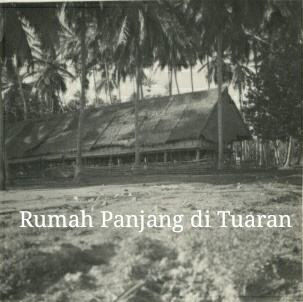THE LEGACY OF PASI DAPI: THE FOUNDING OF THE DUSUN KLIAS SETTLEMENTS IN BEAUFORT
- Marwan Bin Musa
- Feb 26
- 3 min read
This paper explores the historical migration and settlement of the Dusun Klias people in Beaufort, Sabah, focusing on their linguistic and cultural connections to the Bundu-Liwan language group. The central figure in this history is Pasi Dapi, a legendary warrior with supernatural abilities who led his people from the highlands of Ulu Sungai Padas to the coastal lowlands. His expeditions, trade activities, and eventual establishment of governance structures through the Majlis Penghulu Lima played a crucial role in shaping the socio-political landscape of the region. This article provides an analytical review of oral traditions, historical narratives, and sociopolitical developments linked to Pasi Dapi’s legacy.
Introduction
The Dusun Klias people, whose language closely resembles Bundu-Liwan, are among the indigenous groups that played a significant role in the historical development of Sabah’s west coast. Oral traditions attribute the first settlements of Takuli, Kinamam, Miang, and Malabau in the Beaufort district to a warrior leader named Pasi Dapi. His journey from the rugged terrains of Ulu Sungai Padas to the coastal plains is a tale of exploration, trade, and governance.
The Journey of Pasi Dapi
Pasi Dapi was the son of a formidable Dusun warrior, renowned for possessing extraordinary mystical and supernatural powers. Seeking new opportunities, he embarked on a voyage, paddling down the Padas River to explore lands beyond his native highlands. His first recorded destination was Berkalow, where he engaged in trade with local villagers, exchanging handmade goods and food resources.
His second expedition took him further downstream to a place called Sanguinan. Captivated by the region’s fertile lands and strategic location, he purchased the territory from the local ruler at the price equivalent to a female servant. Yet, his nostalgia for the highlands drew him back to Ulu Sungai Padas, though the idea of settling in the lowlands remained strong.
Establishment of New Settlements
On his third journey, Pasi Dapi reached Bangkalalak, where he resided for a year. During this period, he married a woman from the Bisaya ethnic group and had two sons, Orang Kaya Raja and Penghulu Besar. Eventually, he relocated to Padas Damit before deciding to return to the highlands to persuade his people to migrate to the coastal plains.
Given the growing population and the necessity for sustainable habitation, the community split into two groups: one settling in Klias and the other in Tuaran. Upon arriving in Klias, Pasi Dapi and his sons established a governing system known as Majlis Penghulu Lima, composed of leaders from five villages. Over time, this council expanded to include seven village leaders, though it retained the original name.
The Governance of Majlis Penghulu Lima
The governing system initiated by Pasi Dapi endured beyond his lifetime. Leadership transitioned to his descendants, notably Orang Kaya Raja and Penghulu Besar Lingkungan, who continued to strengthen the council’s influence. Successive leaders included Orang Kaya Shahbandar Mohamad, Orang Kaya Shahbandar Jemaut, Orang Kaya Shahbandar Barun, Orang Kaya Shahbandar Tamit, and eventually, Orang Kaya Shahbandar Saut.
Under British colonial rule, the North Borneo Chartered Company (SBBUB) officially recognized the authority of Majlis Penghulu Lima by appointing its leader as a magistrate in the Native Court, residing in Sungai Kerukan. This area became widely known for its cultivation of white pepper and sago, critical economic commodities within the Klias region.
The Decline of Majlis Penghulu Lima
Despite its historical significance, the governance structure of Majlis Penghulu Lima eventually dissolved. The transition of administrative authority from indigenous councils to formal colonial and post-colonial governance structures led to the decline of this traditional institution.
Conclusion
Pasi Dapi’s legacy endures in the oral histories and cultural heritage of the Dusun Klias people. His role as a warrior, trader, and political leader laid the foundation for the settlement patterns and governance systems in Beaufort. While the Majlis Penghulu Lima no longer exists, its historical contributions to regional administration remain a critical part of Sabah’s indigenous history. Further research and documentation of oral traditions are essential to preserving the rich history of Pasi Dapi and the Dusun Klias community.
References
Mohon Izin (Rowe Gone)
Daly (1886)
PS SHIM (2007)
Kumis Kumis (Editor & Compiler)
MTH Perelaer (Illustrations)
Rutter, Owen (1929). The Pagans of North Borneo.
Evans, I.H.N. (1953). The Religion of the Tempasuk Dusuns of North Borneo.
Sweeney, Amin (1975). Malay Shadow Puppets: The Wayang Siam of Kelantan.
Appell, G.N. (1965). The Dusun: A North Borneo Society.







Comments